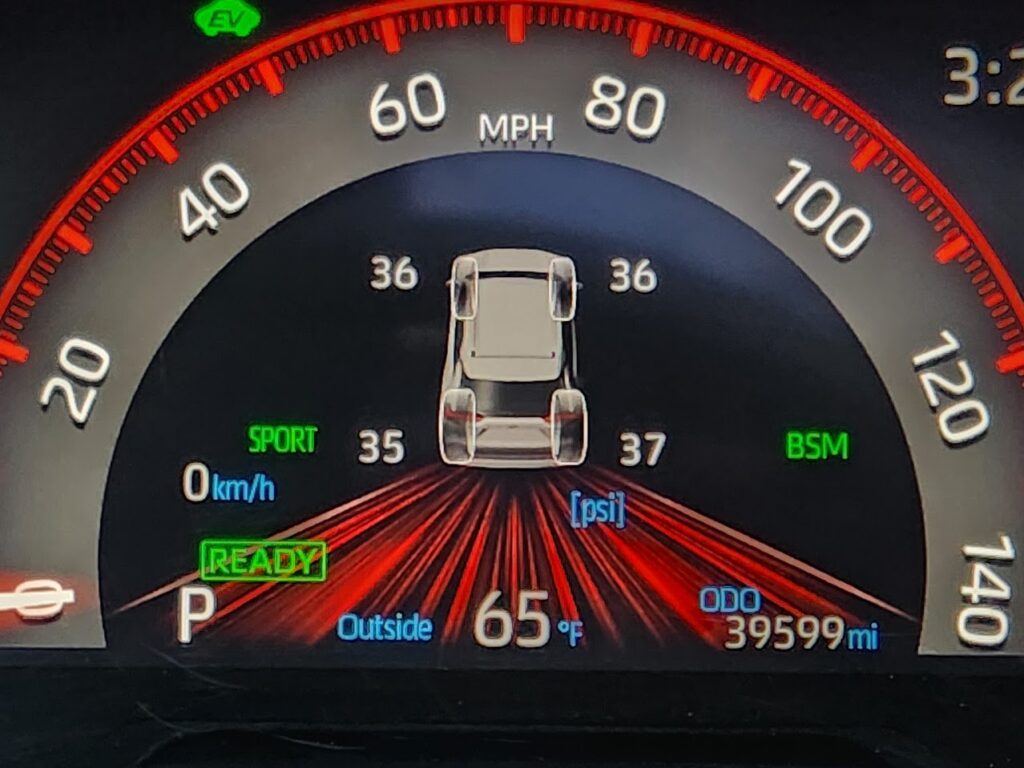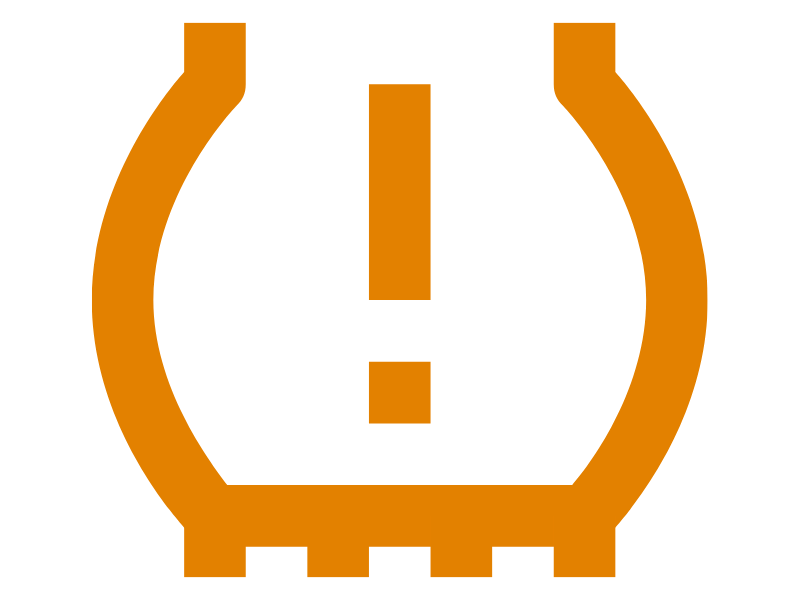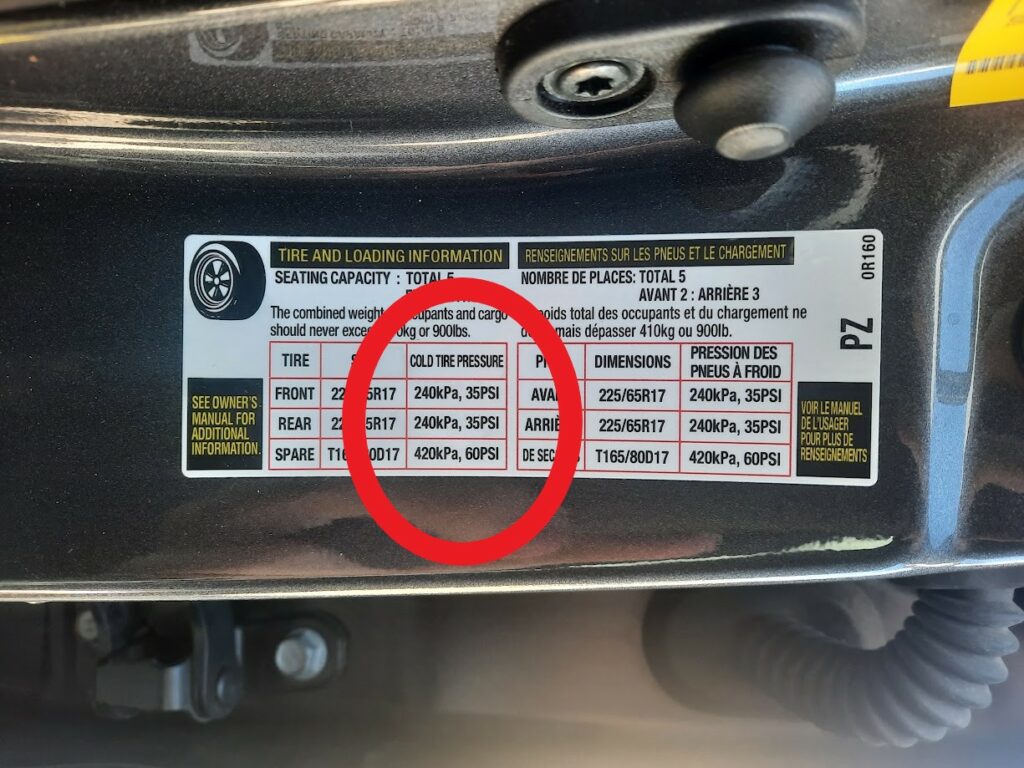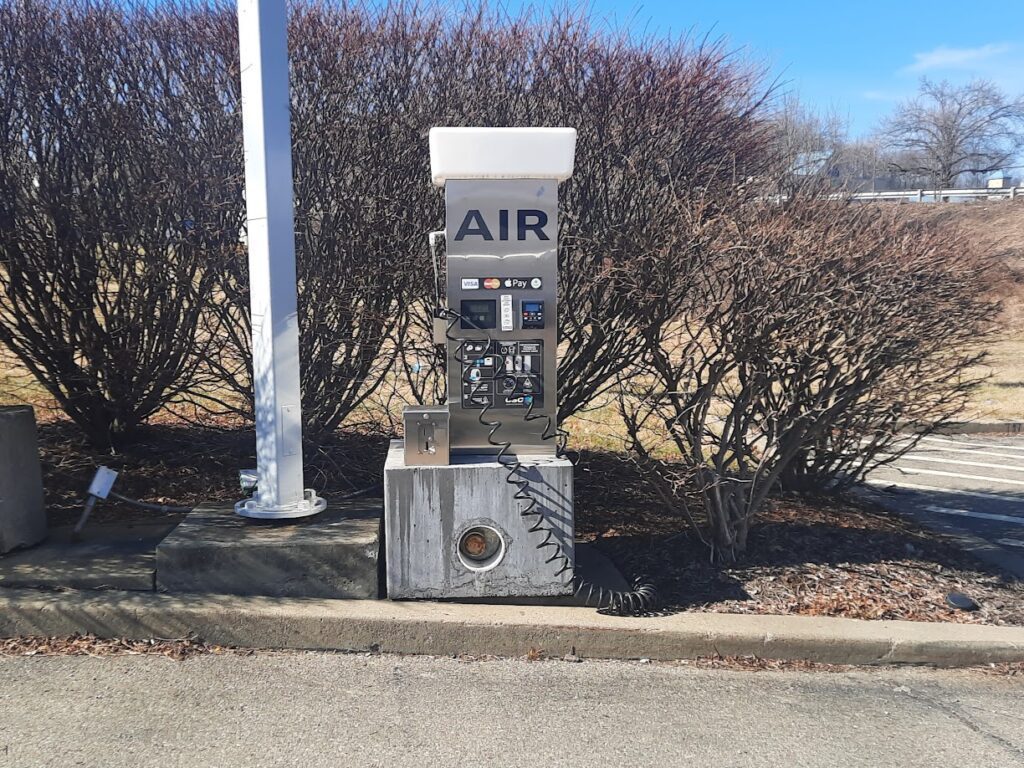How to Read and Set the Tire Pressure on a Toyota RAV4
It’s very important to keep your tires properly inflated. After all, your tires are the only point of contact that your vehicle has with the road.
Lucky for you, I’ve created this comprehensive guide with everything you need to know about viewing, measuring, monitoring, and setting the tire pressure on your Toyota RAV4.
Displaying the Tire Pressure
Yes, a Toyota RAV4 can display the tire pressure in the Toyota app or on the multi-information display.
The ability to do so depends on your model year, trim level, and country. The ability to view the tire pressure varies widely based on these factors.
For example, my 2021 RAV4 LE could not display the tire pressure on the multi-information display, but could be viewed in the Toyota app. On the other hand, I rented a 2022 RAV4 Hybrid Limited and the tire pressure was viewable the tire pressure both on the display and through the Toyota app.
Another example is by country. Many Canadian RAV4s do not have the ability to monitor tire pressure because they lack a tire pressure monitoring system (TPMS).
Using the Multi-Information Display
Using the arrow keypad on the steering wheel, you cycle through your multi-information display screens. One of these screens can display the tire pressure for each wheel if your model is equipped with this feature.
Here’s what it looks like:

We haven’t been able to confirm exactly which trim levels are capable of showing the tire pressures directly on the multi-information display. I’m surprised this isn’t included as a default feature on all RAV4s.
Using the Toyota App
The Toyota app is a free mobile app that can help you stay connected to your vehicle. It offers a free trial that allows you to view your tire pressure in the app via Toyota’s Connected Services.
Note: You will need a Service Connect free trial or subscription to access this feature. Learn more about Service Connect in the video below.
Once you have Service Connect, here’s how to set it up.
- Download the app to your device
- Open the app and tap Register to create a new account (or login with your existing credentials)
- Enter your personal identification information and tap “Sign Up” to have an activation code sent to your email
- Get the activation code and use it to verify your account
- Use your device’s camera to scan the VIN within the app or enter it manually
- Tap “Add Vehicle” and confirm the vehicle and dealership for your RAV4
- Review the Connected Services Trials and tap “Continue”
- Review the Connected Service Data Handling Requirements and tap “Agree and Continue”
- Review the Service Connect Communication and tap “Agree and Continue”
- Review the Auto Insurance Designed for you and tap “Agree and Continue”
- Tap “Finish Setup” to complete the process
After you’ve set up the app with your vehicle’s details, you can use it to view specific information about your RAV4 like tire pressure.
Alternative Methods
Not everyone likes to digitize their auto experience. If you like an old-fashioned to approach to car care, then you don’t have to use the app. Here are some other options that I prefer to use.
1. Use an Air Pressure Gauge
The easiest way to get an accurate reading of your car’s tire pressure is with an air pressure gauge.
Having a way to check your tire’s air pressure is useful. You’ll want to check the pressure of your tires every few months for maintenance purposes, especially when the outside temperature changes significantly. If you’re planning to go on a long trip or carry additional loads, it’s also a good idea to check your tire pressure before departure.
You’ll get a more accurate reading on your air pressure gauge if you check when your tires are cold. This is because tire pressure can decrease around 1 PSI for every 10 degrees the temperature drops. This isn’t due to air escaping but rather the air inside the tire condensing. It’ll take up less space when it’s cold. However, this is only temporary because driving will heat up the tire and then increase the tire’s pressure.
I recommend tossing the AstroAI digital tire pressure gauge into your glovebox. It’s accurate, easy to use, and won’t take up much space inside your SUV.
2. Wait for the Tire Pressure Light
If you don’t want to use the app or purchase an air pressure gauge, then you can rely on the RAV4’s low air pressure warning light. This light is reliable, but it can take a little while to turn on. Your tires will need to reach critically low pressure before you’re notified on your dashboard.
Additionally, you’ll only see the tire symbol rather than the tire pressure reading. Here’s what it looks like:

In some cases, the TPMS warning light can go on during colder weather. This doesn’t necessarily mean that your tire has a leak. You can wait to see if the light turns off as you drive, but if that’s not the issue, you’ll need to address the issue sooner rather than later.
Finding the Correct Pressure
Before setting your tire pressure, you’ll need to know what PSI to set the pressure at.
Luckily, this is easy to find. No need to dig through the owner’s manual!

- Open the driver’s side door.
- Locate the sticker on the door jamb.
- Make note of the correct tire pressures.
Setting the Pressure
Setting the tire pressure on your RAV4 is quite easy and can be done for free!
To do this, you’ll need a portable tire inflator or air compressor. You can also find these at most gas stations (usually for free).

An alternative is to keep a portable inflator in your trunk. These don’t take up much space and are super handy when you are in a pinch. The last time I tried to use the air compressor at a gas station it took my money and didn’t even work!
For an affordable option, I recommend the AstroAI tire inflator. It has to be plugged in to the car’s lighter plug to function.
Here are the steps to set your Toyota RAV4’s tire pressure:
- If using a gas station air pump, set the desired pressure on the pump.
- Unscrew the cap from the tire’s valve stem
- Place the cap in a secure location, so it doesn’t get lost
- Attach the air hose to the valve
- Push down until you hear air inflating the tire
- If using a gas station air pump, hold it in place until the air pump beeps
- If using an air compressor, hold it in place for a few seconds, then check the pressure manually
- If it remains low, continue filling
- Put the cap back in place once the pressure is correct
- Repeat this process for any other low tires
You may want to reset your RAV4’s tire pressure light after filling up.
Risks of Low Tire Pressure
Monitoring your tire pressure is very simple to do, but it is often neglected by RAV4 owners. It’s one of the most important aspects of vehicle maintenance that you should be keeping an eye on.
Low tire pressure can be caused by cold weather, a puncture, a damaged wheel, bad tires, or simply elapsed time (Chapel Hill Tire).
When driving on low tire pressure, you expose yourself to unsafe conditions and more wear and tear. Below is a list of the risks associated with driving on low tire pressure.
- Increased wear and tear: Your tires will wear out quicker and will do so unevenly.
- Braking distance is increased: It will take longer for you to stop your vehicle quickly in an emergency.
- Handling is negatively impacted: You will have less steering precision and vehicle stability during turns and maneuvers.
- Lower fuel economy: Your RAV4’s miles-per-gallon (MPG) will be lower.
(Michelin)
Conclusion
While most modern RAV4s have a tire pressure monitoring system, not all trim levels can display this information directly on the dashboard. If it can’t be seen on your dashboard, you can usually view it on the Toyota app with a Service Connection subscription.
If you don’t want to use the app or dashboard, you can revert to using an air pressure gauge or wait for the warning light to appear on the dashboard. Either way, the tire pressure gauge is an inexpensive investment that can make refilling your tires significantly easier.
Does your RAV4 have a tire pressure display on the dashboard? Leave a comment letting us know (include your model year and trim level)!
